Memory retrieval 1 - L13
1/33
There's no tags or description
Looks like no tags are added yet.
Name | Mastery | Learn | Test | Matching | Spaced |
|---|
No study sessions yet.
34 Terms
Who first investigated memory experimentally?
Ebbinghaus - used himself as his own participant.
How did Ebbinghaus study memory?
he created long lists of nonsense syllables and then remembered them until he could recall them all.
What did Ebbinghaus produce from his findings?
The forgetting curve using the method of savings (how many items studied he could remember)
What does Ebbinghaus forgetting curve show?
as interval increases, forgetting falls.
- forgetting is initially very rapid but then levels of over the days.
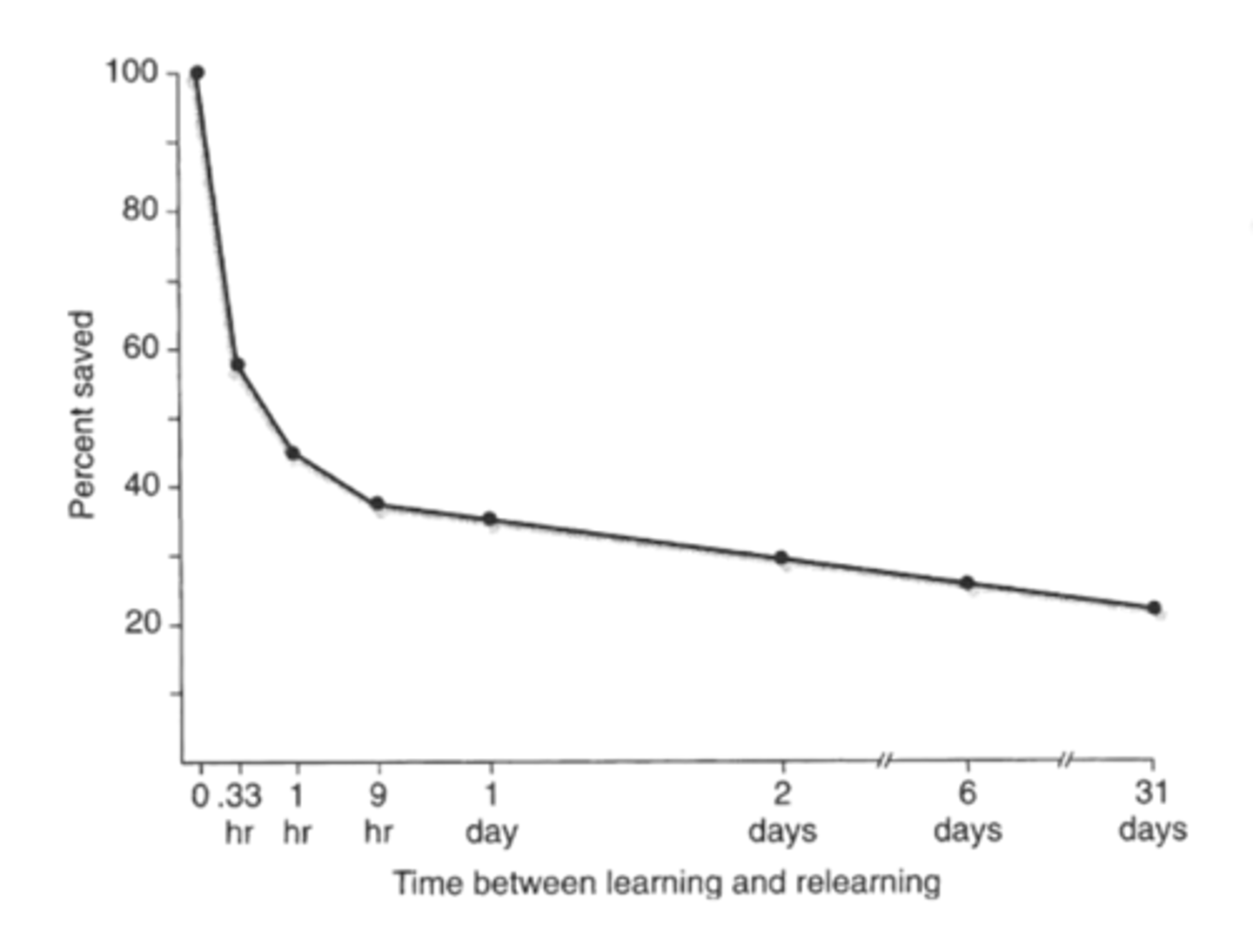
What did Henderson (1985) study?
Forgetting in rats - where less licking behaviour means more fear.
What did Henderson (1985) find?
Excitatory conditioning
When the intensity of the shock was 0, rats showed high licking behaviour but as the intensity of the shock increases, rats licking behaviour decreases.
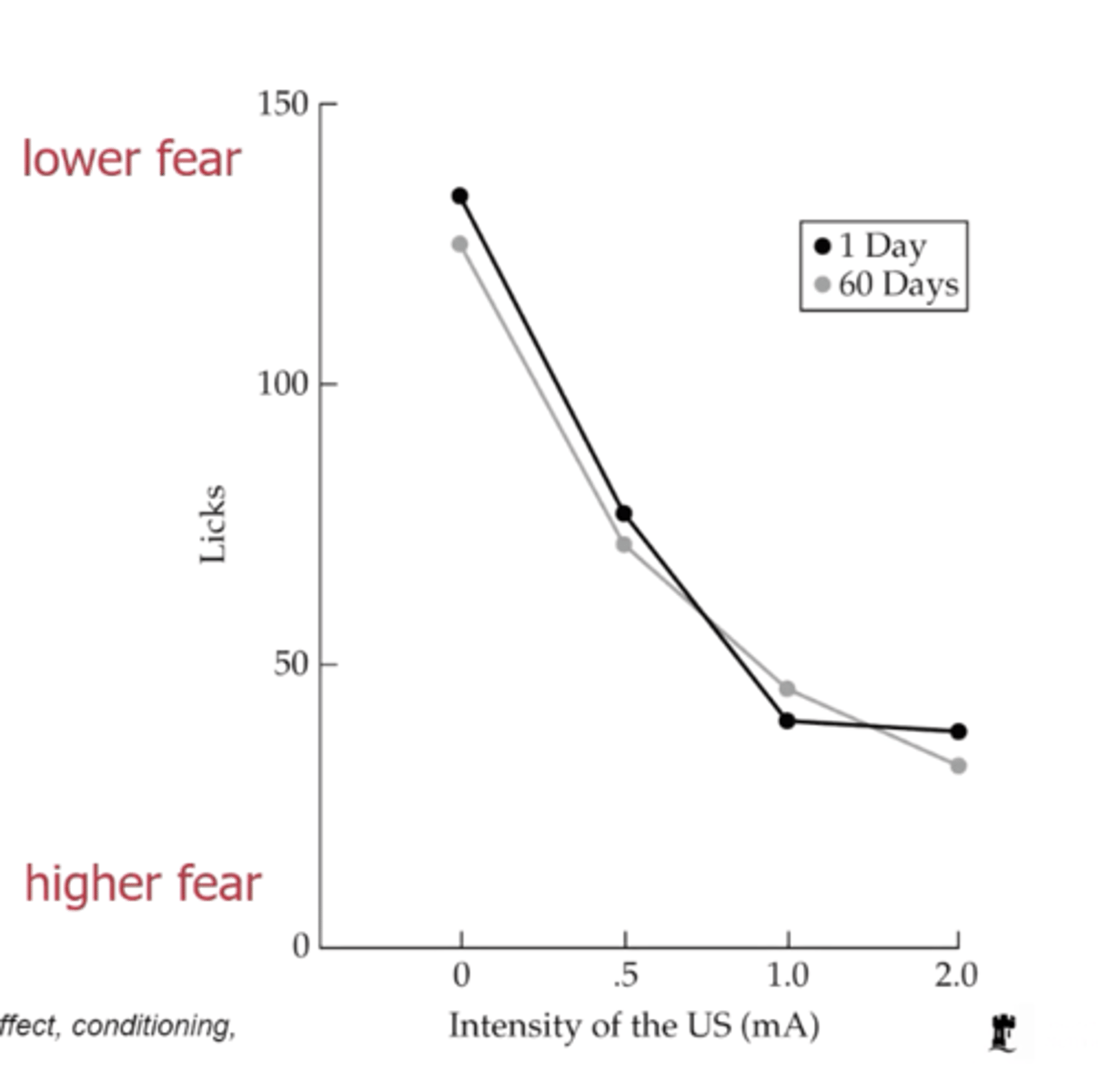
what happened when rats were tested again 60 days afterwards? (Henderson 1985)
no forgetting had taken place - their behaviour of licking suppression was exactly the same as it was on day 1.
- their memory is resilient to forgetting.
What is inhibitory conditioning?
conditioning procedure in which the CS is associated with the absence or removal of a US
tone > food
tone > no food
What behaviour was found in rats 35 days after inhibitory conditioning? (Henderson, 1978)
Initially, the rats learnt that X indicates absence of the shock. However after 35 days, this appears to be forgotten
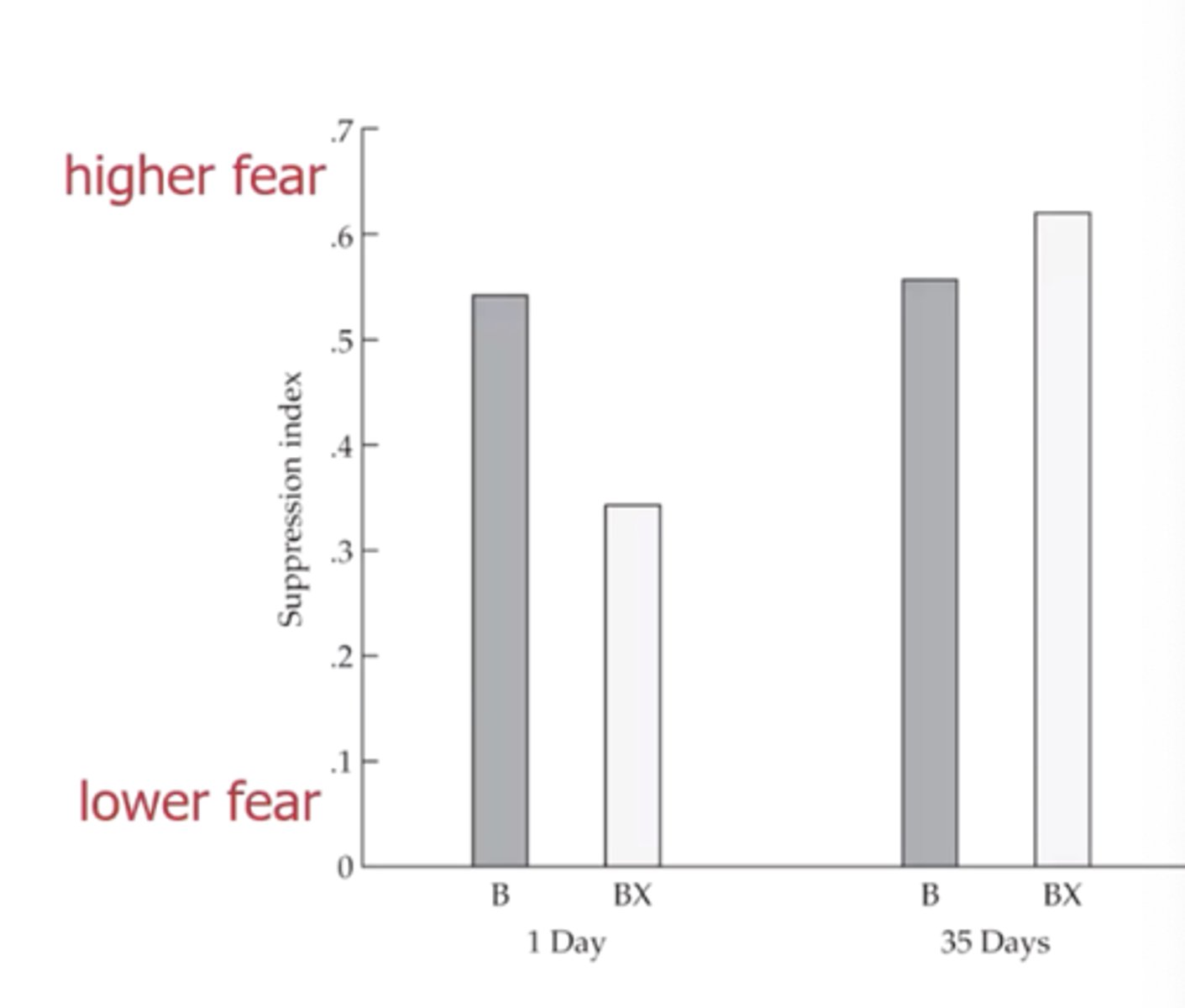
What do Hendersons 1978 findings on inhibitory conditioning suggest?
In a more complex learning situation, some forgetting is seen.
What did Gordon et al (1979) find on forgetting of avoidance learning.
CS > Shock - avoidance?
- rats conditioned CS > shock > avoidance behaviour.
- wait 3 days
- If a reminder was given to the rats 10 minutes before the test session (after 3 days) performance is very good/forgetting is reduced (high fear again).
- but not if the reminder was given 3 days before the test (lower fear)

what do Gordon et al (1979) findings suggest?
Forgetting can be reduced by a reminder.
What was the Krechevsky maze? (Deweer & sara, 1984)
The rats have to make their way through the maze where they receive food pellets. the number of errors made is scored each time.
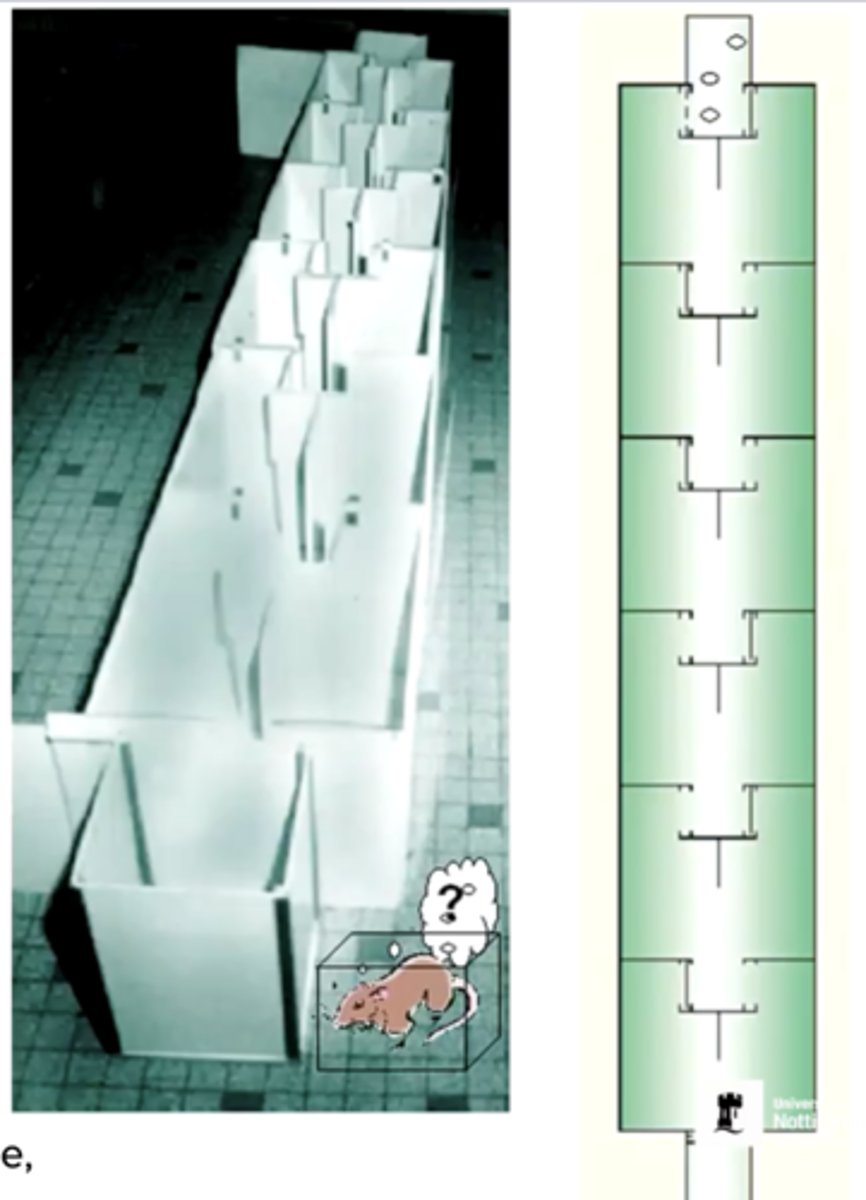
what did (Deweer & sara, 1984) find?
By 5 trials of training, the rats number of errors rapidly reduced.
What happened to rats performance in the maze when they were tested 25 days later? (no reminder) (Deweer & sara, 1984)
they showed forgetting compared to the end of their training
What manipulation did (Deweer & sara, 1984) make?
They presented extra-maze cues for either 10, 30, 90, or 300 seconds before the rats would do the maze.
What did (Deweer & sara, 1984) find from their extra-maze cues?
memory performance was restored completely after 25 days by a reminder of 90 seconds prior to the test
- rats performed as they did at the end of initial training.

What do findings from (Deweer & sara, 1984) extra-maze cue study suggest?
Forgetting can be alleviated if the right retrieval cues are used at the time of test.
What may amnesia (forgetting) be due to?
Forgetting is not due to a storage deficit (memories are not gone) but a retrieval failure.
What is trace decay theory? (Hebb 1949)
When an experience occurs, it activates a neural trace (a pattern of activity in the brain). If this trace isn't rehearsed or reinforced, it gradually decays—leading to forgetting.
What is the principle of Herbian learning?
"cells that fire together, wire together"
- link between association neurons will become weaker and weaker as time goes on if no training to support performance.
What does Trace decay theory fail to explain?
The effect of reminders
What is interference theory? (McGeoch 1932)
when forgetting occurs not because memories simply fade (like in trace decay theory), but because other information gets in the way—it interferes with our ability to retrieve a memory.
What may happen in the interference theory?
Because a given individual may have had various experiences, multiple items may become associated with the same cue.
- the more similar the interfering material is, the stronger the interference.
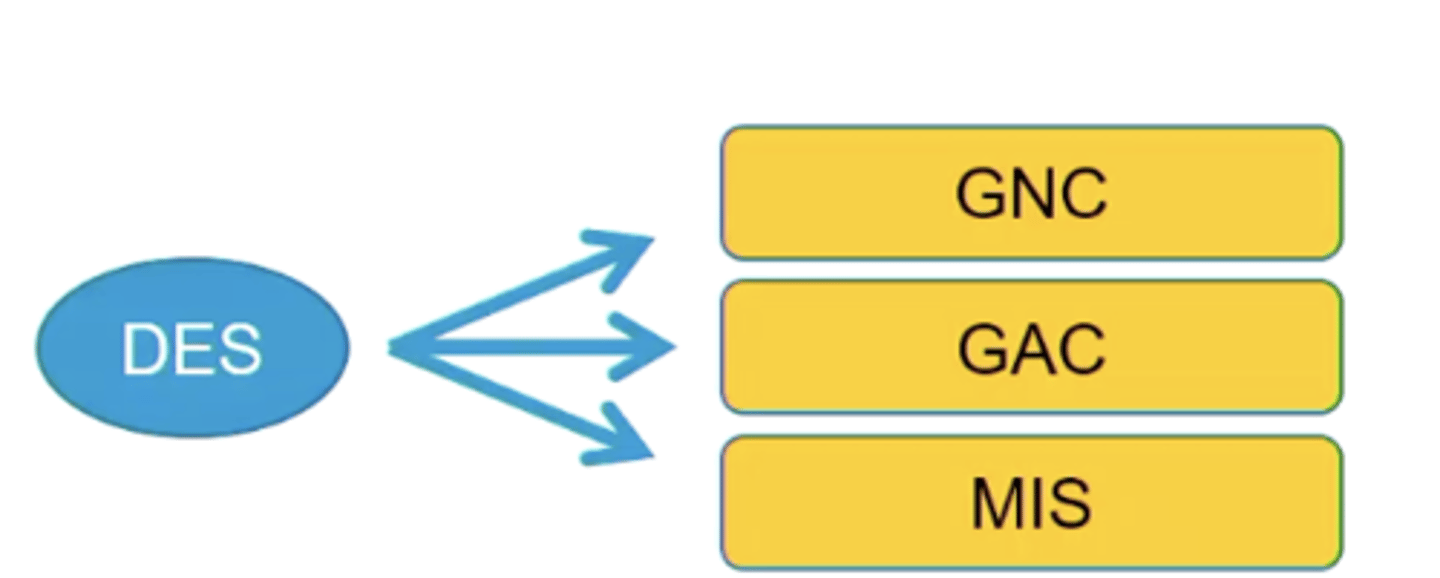
What is prOactive interference?
when Old information interferes with the new.
- e.g You keep entering your old phone number instead of your new one.
What is retroactive interference?
when new information interferes with the old.
- e.g You learn your new address and struggle to recall your previous one.
What can explain how reminders work?
Associative learning
What design did Godden & Baddeley (1975) use and why?
Cross-over design to show that the context has an effect on the retrieval of memories.
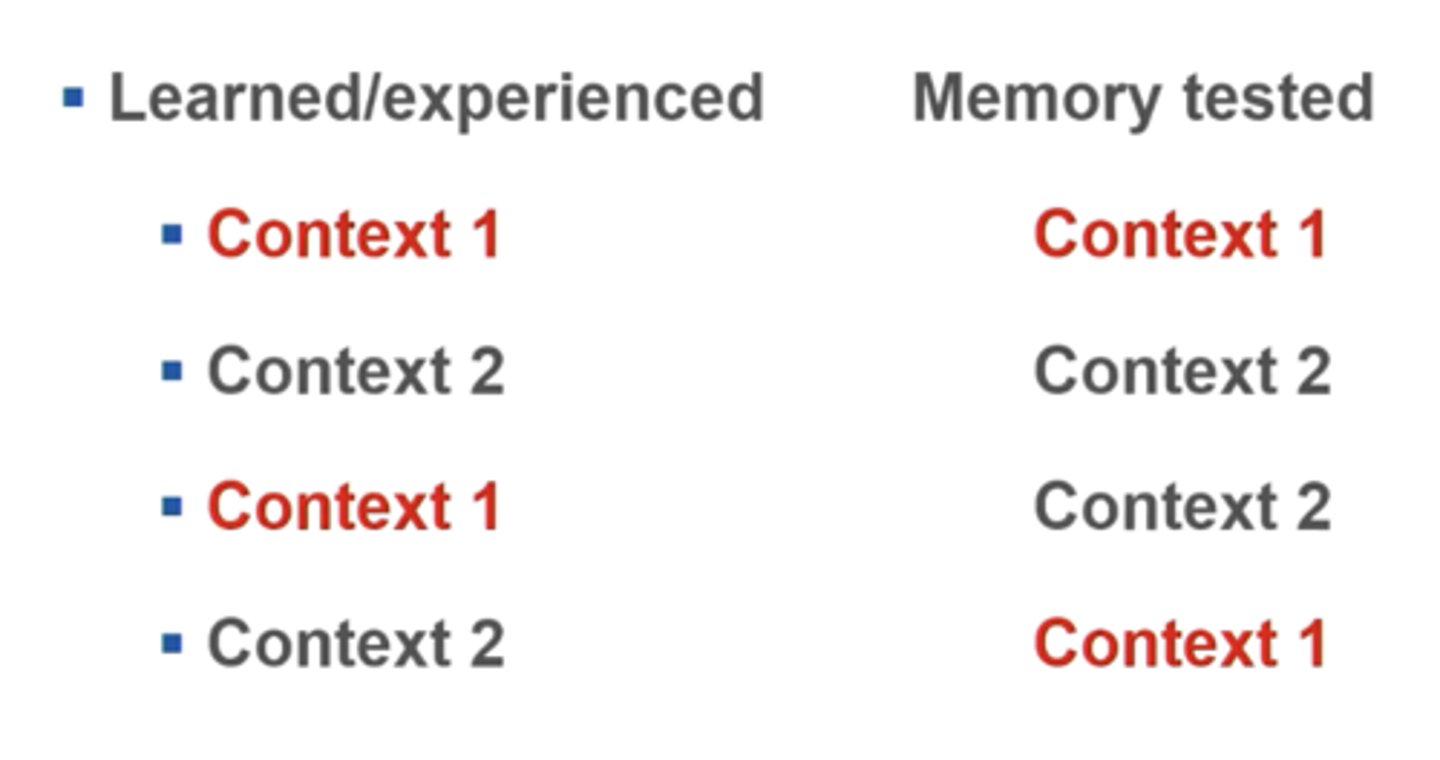
What did Godden & Baddeley (1975) find?
Context aided retrieval of memories.
- performance was best when the conditions of learning were the same as the conditions of test.
What does Godden & Baddeley (1975) findings suggest?
environmental cues/context can help memory retrieval.
What do Tulving and Thomson (1973) suggest about encoding specificity?
Encoding in context provides memory triggers - effective cues enable the recall of items that would not be retrieved under non-cued recall items (cued vs free recall)
What did Parker et al (2001) study?
How different odours influenced memory retrieval in undergraduates.
What did Parker et al (2001) find?
When scent/odour changes between learning and testing context, it significantly impairs the participants ability to retrieve information (external contextual cues)

What do Parker et al (2001)'s findings suggest?
Contextual and other external cues can aid memory retrieval (along with spatial environment and music)